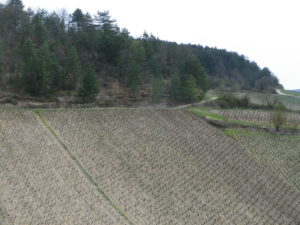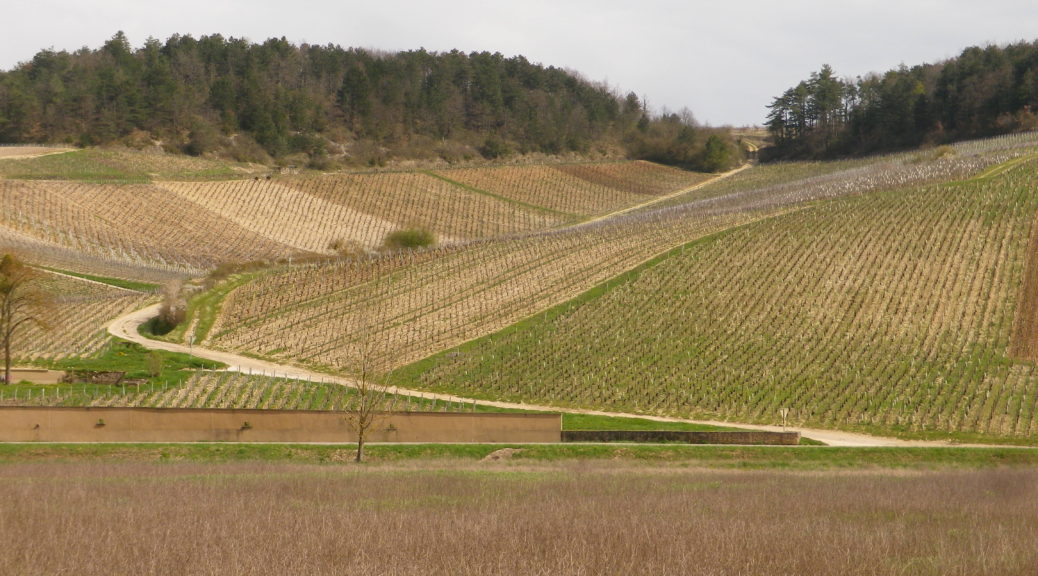Chablis is a small town in the northwest corner of Burgundy, France. It is also an appellation. The appellation produces of some of the most delicious, mouth-watering, Chardonnay in the world. The town itself is surrounded by all of the seven grands crus in the appellation, and these were what I had come to see, and taste, of course.
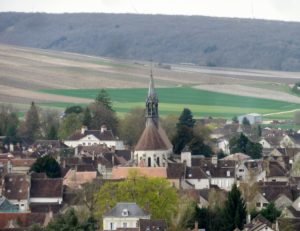
The Sept (Seven) Grands Crus trail delivered on its promise: I went through or along, or within sight of all seven. Less a hike, and more of a stroll, even the most hedonistic wine-taster, or gourmand who has spent decades indulging exclusively in the rich, buttery cuisine of this area, could complete this short trail. While not for everyone, (most people would be content simply to taste the wines on offer from multiple winemakers within the town), this trail will certainly interest Chablis wine-enthusiasts who have come to appreciate the land, the terroir, from which this nectar derives. I found it fascinating to see the lay of the land, the expositions, and the world-famous stone.
Lying liberally atop the Kimmeridgian soil, the limestone literally covered the ground. Its creamy whiteness contrasted with the gray clay earth. The limestone is the secret of Chablis’s success. It dates back eons, when the entire region was covered by a huge ocean. While limestone is found in many places, here, it is particularly rich in the fossilized shells of the ancient, small shellfish that lived, then died here. While the stones (I have been told) can taste a bit salty, the real attraction for me, literally lay in the stone, in seeing the fossils of early oysters.
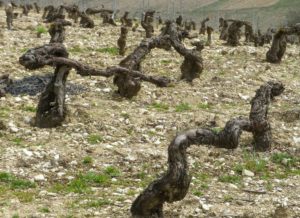
Starting in the town, itself made from limestone, and heading directly to the hillside facing the town, I began my search for an example to photograph as soon as I crossed the D965 and entered the Grand Cru Les Clos. By the time I reached the orientation table, I still hadn’t found any, though I did raise my eyes to admire the view. Nor was I successful as I followed the tree line, through the Valmur Grand Cru. The windswept Vaudesir, Preuses, Bougros, Grenouilles, yielded no examples either, and at this point I began to hope people weren’t taking them as souvenirs. (I would rather they be left in place for the flavor they help impart to the wine.) I took plenty of rock photos in the hopes I might see some fossils in the blow-ups though, but apparently, I photographed all the wrong things.
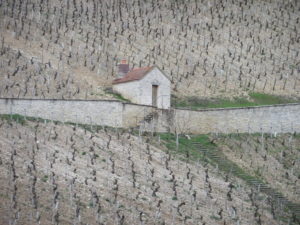
While strolling through the attractive municipal park back to the start point, I realized that the overall characteristics of this trail reflected the characteristics of Chablis wine itself. It was practically colorless, austere, and there was no oak. True, I walked this trail on a gray day, in late March (2018). Nothing was in bloom. Excepting the pines and a few early-budding trees in the valley, there was no green or any other color.
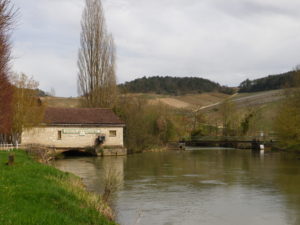
It is an austere trail in that while it provides some fantastic views of the whole region, the only other views were of vineyards, which seem to stretch forever. This is the attraction, and the raison d’etre of the trail, but some would find it limiting. (Chablis, the town, is very much a no-nonsense, working town, and the grapes and the wines from them are its lifeblood.) Finally: no oak. In the case of hiking, means that the trail is not shaded (except very early mornings).
Overall then, I found this trail a great one to follow for those interested in the Grands Crus. And given the lack of cover, the trail is perhaps best done on a cool and cloudy late fall/early spring day, followed by a tasting. Sampling some of the clear, pale wines later that day, I detected an austerity, a slightly salty minerality and a crispness, much like the Grands Crus trail I had experienced.
